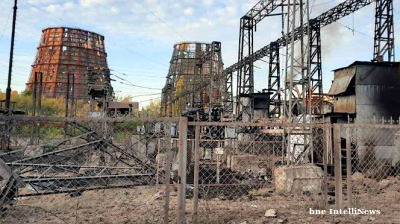This time last year and a cheer went up from amongst Ukraine’s supporters. The twin oil sanctions were moving into place and it looked like they were going to work as Russia’s oil revenue collapsed, down by 46% year on year, and the federal budget deficit blew out to unprecedented proportions.
The Russian budget had been reporting surpluses for eleven months in a row in 2022, but collapsed completely that December, ending the year RUB3.3 trillion in deficit, or 2.3% of GDP after the state was hit with a massive RUB3.9 trillion of spending obligations. The Russian budget always does about a fifth of the whole year’s spending in December, but in 2022 the spending was off the scale and ate up all the surpluses accumulated during the year and then a few trillion rubles more.
Things in January 2023 got even worse. The second of the oil sanctions on oil products wasn’t due to go into effect until February 5 but the threat of its effects had already made themselves felt and Ministry of Finance (MinFin) started the year with a whopping RUB1.7 trillion deficit – the largest January deficit on record and already equivalent to half of the full year’s expected deficit.
Two months later the full year forecast was surpassed and Russian Finance Minister Anton Siluanov’s statements that he expected to keep to the full year forecast of only 2% looked like a pipedream.
But he was right. Oil exports were rapidly reorientated from Europe to Asia. The tax system was remade to account for the sanctions, abandoning the Urals blend as a benchmark in the process. And by the summer the budget was back in profit. At the end of the year Russia reported 3.6% of growth and a deficit of 1.9% of GDP, slightly better than the original forecast.
Deficit 2M24
Where are we this year? The short answer is both better and worse.
MinFin has just released the budget data for January-February. the budget deficit first.
There was a deficit this January too, but at RUB308bn ($3.3bn) it was nowhere near as bad as last year’s. However, by the end of February that had grown dramatically to a cumulative deficit of RUB1.5 trillion, or 0.8% of GDP.
While 0.8% is less than half of last year’s deficit, that is almost at the full year forecast for this year of a RUB1.6 trillion deficit in 2024, according to the budget forecast. So in that sense 2024 is already off to a worse start than last year.
It raises the question: can MinFin really balance spending and revenues for all ten months left in the year? That will depend heavily on what happens to oil prices this year, how much the Kremlin spends on the war (a Russian spring offensive is expected), and whether the West can find more effective ways to sanction Russia’s income.

Central Bank of Russia monthly macro survey – budget balance in 2024
Revenues 2M24
The mild January deficit was helped in the first two months after oil and gas prices surged during that period. Oil is now above $85 per barrel after having spent months last year at around $65.
According to a preliminary estimate, oil and gas revenues were up by a solid 71.2% y/y in January-February at RUB1.6 trillion ($17.9 bn), plus a one-off mineral tax payment from the last quarter of last year, reports the MinFin. “Oil and gas revenues are also expected to remain steadily above their baseline level in the coming months,” the ministry added.
The government also had a windfall from the non-oil and gas revenues that were up 55% y/y to RUB3.4 trillion. But remember this gain was from those terrible first months of last year when revenues crashed.
Taking out the low base effect from last year, MinFin said the non-oil revenue was “largely in line with budget projects.”
Total Russian budget revenues totalled RUB5 trillion ($55.4bn) in January-February. Expenditures in the same period were RUB6.5 trillion ($71.6bn) for the federal budget.
Expenditures 2M24
The problem is that while oil and gas revenues were above normal, budget spending was also above normal – and by a lot more than the extra trillion rubles MinFin gained from oil revenues; by twice as much.
Federal budget expenditures in February sharply accelerated to RUB3.2 trillion and RUB2.7 trillion in January to a total of RUB6.5 trillion for the first two months of this year, “which is a significant deviation from the seasonal norm,” according to the Bank of Finland institute for Emerging Economies (BOFIT).
Sailing close to the wind
So before you get lost in all these numbers, lets recap.
The government spent a total of RUB6.5 trillion in the first two months of 2024, of which at least a fifth is going on defence.
It made RUB5 trillion in the same period, of which RUB1 trillion was from exceptionally high oil and gas revenues and another RUB3.5 trillion from non-oil revenues, which were largely where they were expected to be.
Adding all this up and the cumulative deficit from the first two months is already at RUB1.5 trillion, which is just shy for the full year forecast of RUB1.6 trillion.
Going forward and that means MinFin will have to work very hard to keep the budget more or less balanced for the rest of the year and the balance will depend a lot on the unknowns of spending demands and the price of oil. However, given the target for this year’s deficit is only 0.8% of GDP, not 2% like last year, MinFin has a lot more wiggle room than last year.
Last year, MinFin dipped into the National Welfare Fund (NWF) to cover the budget shortfall, spending about half of the RUB6.8 trillion in Russia’s rainy day fund, which still holds RUB4.8 trillion – more than enough to cover a deficit of only RUB1.6 trillion for several more years.
Even if the deficit blows out to similar levels as last year of RUB3.4 trillion – more than the originally forecast RUB2.9 trillion, but still only 2% of GDP thanks to that strong economic growth – then the NWF would still cover the deficit for another year and half.
Spending and growth in 2024
Last year was made easier for MinFin by the unexpected strong growth that caught even the Kremlin by surprise. However, it is unlikely to have the same luck again.
That growth was helped by the military Keynesianism effect of heavy spending on military production, but now Russia’s factories are already running three shifts a day 24/7 that economic growth has probably already hit its ceiling.
Russia’s industrial capacity utilisation is already at an all-time high of 81% and there are simply no more production lines that can be easily put into operation nor, with so many men on the front line, are there any spare workers to operate them if there were – a second constraint on more growth.
The Central Bank of Russia (CBR) said in its monthly macroeconomic forecast survey for March that GDP growth this year will be 1.8%.
“Analysts have improved the GDP forecast for 2024 to +1.8% (+0.2 p.p.). The forecasts for the following years and the estimate of the long-term GDP growth rate are unchanged at +1.5% per annum,” the CBR said.

Central Bank of Russia monthly macro survey – GDP growth in 2024
The international financial institutions (IFIs) are more pessimistic. IMF recently lowered its forecast to 1.1% – although last year showed that predicting Russia’s growth has become extremely difficult, as everyone missed the target in 2023.
Persistent high inflation will be a significant drag on growth and has already forced the CBR to hike interest rates to 16% – a growth-crushingly high rate.
Spending is also a concern. Revenues grew in the first two months of this year, but spending, up 17% y/y, grew faster. Tax revenues of Russia’s budget system are expected at RUB52.5 trillion ($571bn) in 2024, which is 12% higher than in 2023, according to head of the Federal Tax Service Daniil Egorov, but that 12% gain doesn’t give the MinFin that much leeway to cope with oil price falls or unexpected increased war costs.

Central Bank of Russia monthly macro survey for March 2024
Features

Ambition, access and acceleration – Uzbekistan’s Startup Garage opens free academy for entrepreneurship
Aim is to train 50,000 young founders by 2030.

Ukraine’s growing energy crisis promises a cold and dark winter
Since the summer, Kyiv has changed tactics. Given the almost complete failure of Western oil sanctions to curb Russian oil exports, it has been targeting Russian oil refineries. The Kremlin has struck back, targeting Ukraine's power system.

Russia, China sign off on Northern Route shipping deal to slash global freight times
Russia and China have signed a landmark agreement to develop and commercialise the Northern Sea Route (NSR), after Beijing tested the route last month, that could slash Europe-Asia cargo transit times and challenge the primacy of the Suez Canal.

Sri Lanka’s economic escape
Sri Lanka’s recovery over the past year reads like a narrow escape rendered into a cautious, albeit unfinished success story.

__0.png)


_2_1761012864.jpg)